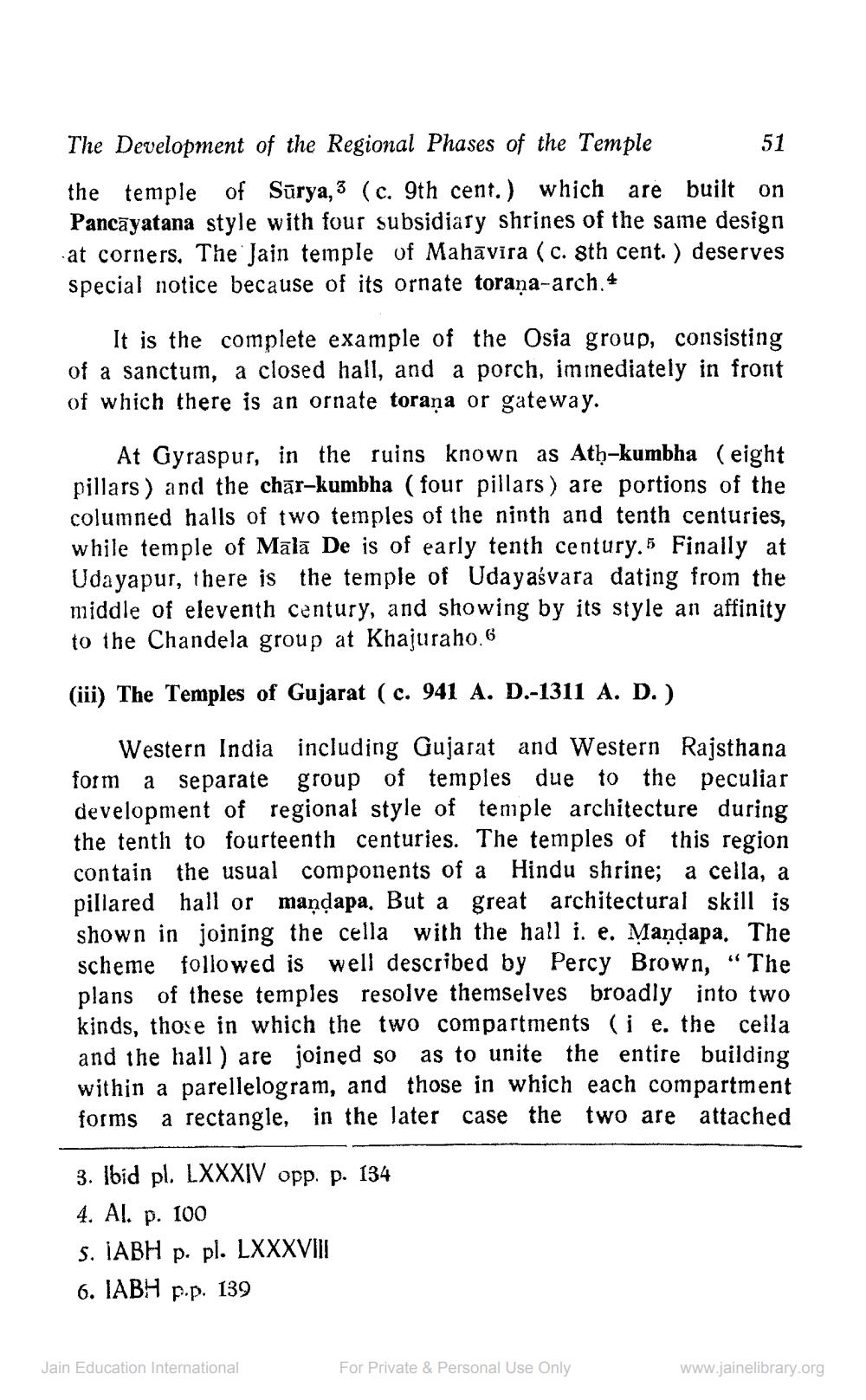________________
The Development of the Regional Phases of the Temple
51
the temple of Surya, 3 (c. 9th cent.) which are built on Pancayatana style with four subsidiary shrines of the same design at corners. The Jain temple of Mahavira (c. 8th cent.) deserves special notice because of its ornate torana-arch.4
It is the complete example of the Osia group, consisting of a sanctum, a closed hall, and a porch, immediately in front of which there is an ornate torana or gateway.
At Gyraspur, in the ruins known as Atḥ-kumbha (eight pillars) and the char-kumbha (four pillars) are portions of the columned halls of two temples of the ninth and tenth centuries, while temple of Mala De is of early tenth century. Finally at Udayapur, there is the temple of Udayaśvara dating from the middle of eleventh century, and showing by its style an affinity to the Chandela group at Khajuraho.6
(iii) The Temples of Gujarat (c. 941 A. D.-1311 A. D.)
Western India including Gujarat and Western Rajsthana form a separate group of temples due to the peculiar development of regional style of temple architecture during the tenth to fourteenth centuries. The temples of this region contain the usual components of a Hindu shrine; a cella, a pillared hall or mandapa. But a great architectural skill is shown in joining the cella with the hall i. e. Mandapa. The scheme followed is well described by Percy Brown, "The plans of these temples resolve themselves broadly into two kinds, those in which the two compartments (ie. the cella and the hall) are joined so as to unite the entire building within a parellelogram, and those in which each compartment forms a rectangle, in the later case the two are attached
3. Ibid pl. LXXXIV opp. p. 134
4. Al. p. 100
s. IABH p. pl. LXXXVIII
6. IABH p.p. 139
Jain Education International
For Private & Personal Use Only
www.jainelibrary.org




